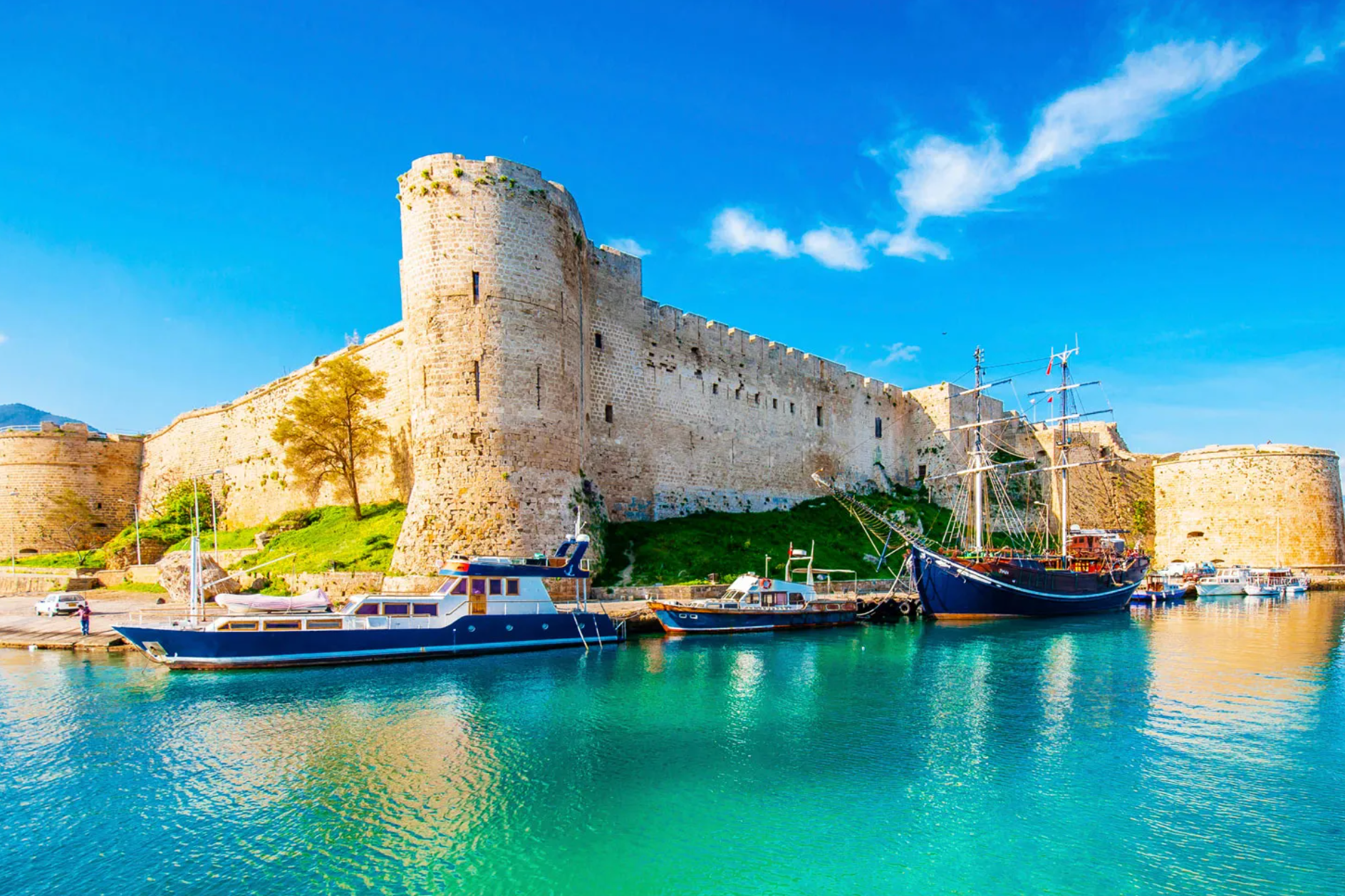


Kyrenia Castle
Kyrenia has existed since the 10th century BC. Excavations have revealed Greek traces that date back to the 7th century BC, and the site was developed into a city under Roman rule. Research carried out at the site suggests that the Byzantines built the original castle in the 7th Century to guard the city against the new Arab maritime threat. The first historical reference to the castle occurs in 1191 when King Richard I of England captured it on his way to the Third Crusade by defeating Isaac Comnenus, an upstart local governor who had proclaimed himself emperor.
After a short period, Richard sold the island to the Knights Templar who could not control it because of peasant revolt, and then to his cousin Guy de Lusignan, the former king of Jerusalem. This began the 300 years of the Frankish Lusignan Kingdom of Cyprus (1192–1489). Initially, the castle was quite small. John d'Ibelin enlarged it between 1208 and 1211. The Castle's main function was military, and the improvements consisted of a new entrance, square and horseshoe-shaped towers, embrasures for archers, and dungeons.
The castle was subjected to several sieges. A Genoese attack in 1373 almost destroyed the castle, and the longest of the sieges, in the 15th century, lasted nearly four years and reduced the unfortunate occupants to eating mice and rats. By 1489 the Venetians had taken control of Cyprus and in 1540 they enlarged the castle, giving it its present-day appearance. The chief changes, such as the addition of thick walls and embrasures for cannons, were adaptations to changes in warfare in the form of gunpowder artillery. The Venetians also installed gun ports at three levels so that they could direct cannon fire against attackers from the land. Inside the castle, they built huge long ramps so as to be able to drag artillery up on the walls. When the work on the castle was finished, its walls also encompassed the small church of St. George, which the Byzantines may have built in the 11th or 12th century.
In 1570, Kyrenia surrendered to the Ottomans. The Ottomans too made changes to the castle, but the British removed these during their occupation. The castle contains the tomb of the Ottoman Admiral Sadik Pasha. The British used the castle as a police barracks and training school. They also used the castle as a prison for members of the Greek Cypriot EOKA organization. The Kyrenia Department of Antiquities took over custodianship of the castle in 1950, though it reverted to British control during the EOKA turmoil. The Department regained control in 1959 and since 1960 the castle has been open to the public. However, during the period from 1963 to 1967 the Cypriot National Guard used the castle as a military headquarters. Following the Turkish invasion of Cyprus, in 1974 the Girne Department of Antiquities and Museums took over responsibility for the castle's preservation and use. The Department is keeping icons that were collected from churches in the Kyrenia area pre-1974 and has stored them in the castle's locked rooms for safekeeping. Some of these are now on display in the Archangel Michael Church.
Kyrenia Castle lies at the entrance to the town’s famous harbour and stands majestic guard over the port. Well worth a visit, the castle is in a remarkable state of preservation and is fully accessible to the public today. A large rectangular structure, the castle contains a cistern, dungeon, chapel, and two small museums, though the real highlight is walking along the ramparts high above the harbor.
Shipwreck Museum
Next door to Kyrenia Castle, this unique museum contains the remains of the oldest shipwreck recovered from Cypriot waters.
One of the rooms leading off the courtyard contains the Shipwreck Museum, which exhibits the remains of a Greek merchant ship from the 4th century BC, one of the oldest vessels ever to be recovered, together with its cargo. In 1965, Andreas Kariolou, a Greek Cypriot diver, discovered the vessel, laden with millstones and amphorae of wine from Kos and Rhodes. The vessel was sailing to Cyprus when a storm wrecked it outside Kyrenia harbour. In 1967 he showed the wreck to archeologists. A team, under Michael Katsev of the University of Pennsylvania Museum of Archaeology and Anthropology, then studied the wreck from 1969 to 1974. The vessel was approximately already 80 years old at the time it sank. Today, the 47-foot-long hull (14 m), made of Aleppo pine sheathed in lead, is preserved in a specially controlled environment in the Museum, together with its amphorae.
The ship sailed in the Mediterranean during the lifetime of Alexander the Great and his successors. The evidence points to her being taken by rough seas around the year 300 BC when she was rather old, with many believing that piracy played a part in the vessel’s sinking – archaeologists found spear points stuck inside the hull of the vessel, possible evidence of an attack before it sunk.
The objects on display in Kyrenia Castle are the original ones that she carried during her last voyage about 2,300 years ago. The 15-meter wooden-hulled (Aleppo pine) ship’s cargo consisted of amphorae, almonds, grain, wine, and millstones from the Greek islands of Samos, Rhodes, and Kos.
